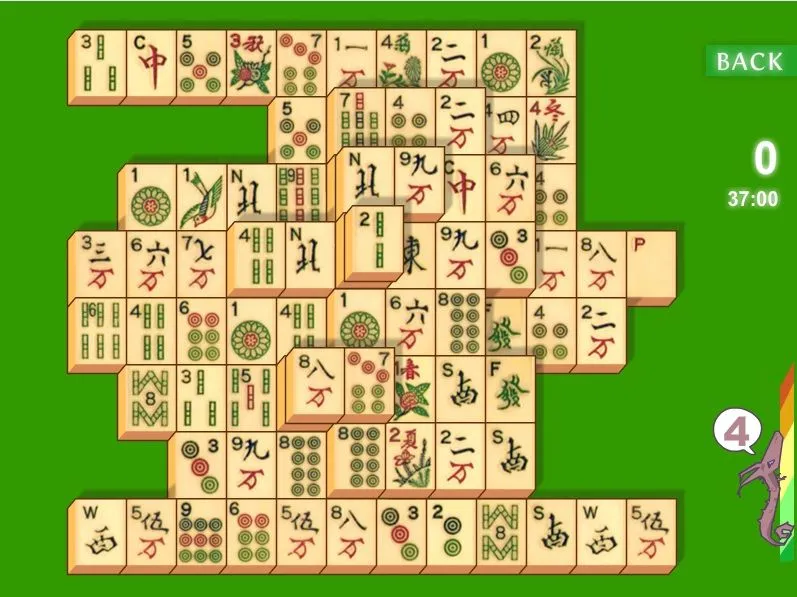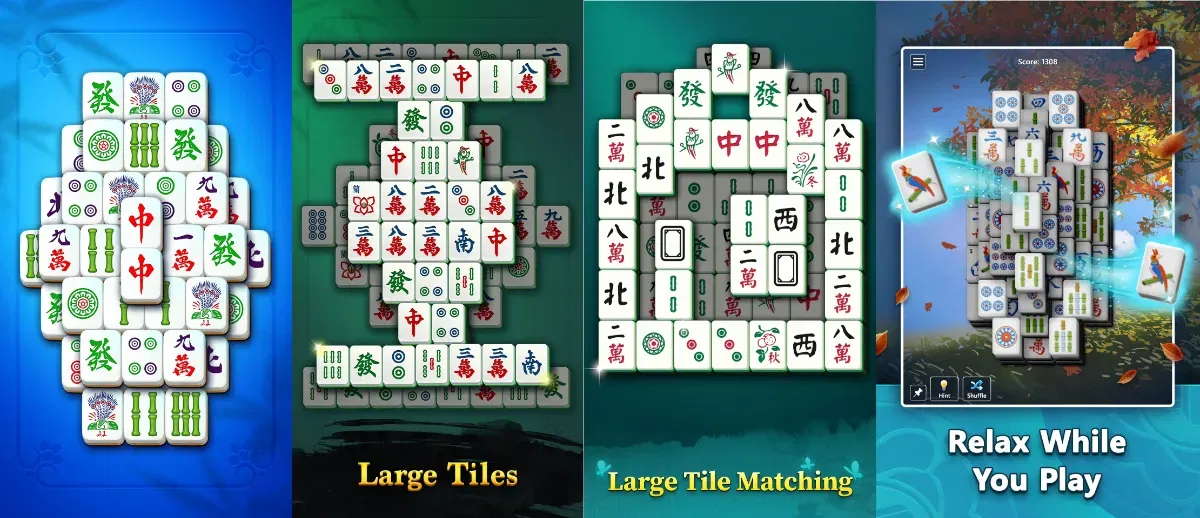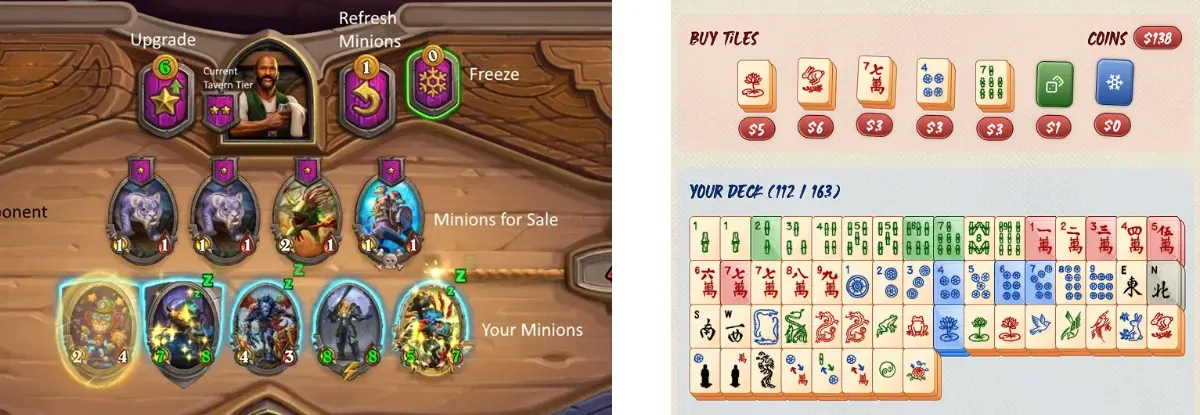
It's Balatro but instead of poker is XXX
Devlog #1: About copying other games
May 19, 2025
This is my series of blog posts describing how I built my game, Whatajong.
To build my game, I started by re-writing the old code from a game I built 12 years ago during the golden age of Flash and Facebook games: A Mahjong Solitaire called Whatajong.

Though the original Whatajong was, in my opinion, ahead of its time, most critics hated it. Still, a small circle of friends waster hundreds of hours into it, and for me, that felt far more meaningful than positive reviews.
I think is worth sharing one of the more memorable reviews it received:
“Whatajong will not surprise you with anything. At least nothing pleasant […] The visuals are primitive, but clear and quite pleasant. What will probably drive you to the brink of madness very quickly, however, are the sounds. The demented grin that sounds when you fail to clear the playing field makes the player want to hit the monitor. [...] As a result, there is basically no reason to play this game when there are a whole range of competitors with whom spending time is simply more pleasant.”
Finding the game
After about twenty hours of tinkering with a new prototype, I showed it to a group of colleagues. Ray, one of the most optimistic people I know, leaned forward and said,
“Hey, Pao. The game looks very promising, but you know what would be even better? A Balatro version of this game. Balatro sold like a zillion copies, and clones are popping left and right.”
I’m not much of a gamer myself, but I can identify hard drugs when I see them. Balatro looks like heroin to me, so if I wanted to adapt my game to be a Balatro-like, I would have to base my whole research by just watching videos and reading articles.
Balatro is misleading because the game is not about building poker hands, but to build tiny “programs” made of Joker cards. The poker hands are just an input for the computation: Like cellular automata, each Joker contains very simple rules, but when combined properly, they produce emergent behaviour that translates into numbers going up.
Wisdom nugget #1 – “People love numbers going up.”
Jokers are a game-design masterclass and Local Thunk’s Guidelines for joker design is a must read for anyone trying to build games.
It’s like Balatro but instead of poker is Mahjong…
I spent a week porting Balatro’s mechanics into my game. The fit was surprisingly natural, and I managed to translate most of the concepts I wanted to bring over. I then used Midjourney to generate a hundred Joker art concepts while brainstorming rules to produce that emergent complexity I was after.

Everything seemed to be going smoothly, but at some point I had to address the elephant in the room. Who is this game for? I knew the answer, since it was not the first time I built this game: a middle-aged/senior person who plays solitaire games at work, toilette, or both.
When I adapted the prototype for mobile, I found that the most successful Mahjong apps (10 million+ downloads) all feature large tiles and full-screen layouts. That left almost no room for my Jokers.

To make things worse, early players seem very confused about the Jokers. They never bought them, and while playing, didn’t notice that they even existed. Perhaps it was just a UI problem, but I think the game is just fundamentally too different and I was trying to paint stripes on an elephant and call it a zebra.
The problem is that the core mechanic of Mahjong solitaire isn’t as light and instantaneous as Balatro’s. Mahjong is a deliberate puzzle that demands time and full mental focus. In Balatro, both the poker hand and the shop feel like slot machines, which is exactly what makes it so addictive.
It became clear that I had to rethink my game from the ground up: emergent gameplay needed to take place on the board itself, not hidden in the deck-building. The shop, therefore, would have to become simpler, like a satisfying reward earned after a mental workout.

I ripped out the Jokers and introduced their most interesting rules into new tile types. I rebuilt the progression system around a simple draft shop inspired by Hearthstone Battlegrounds: you choose from a rotating pool of tiles each round; buying three of the same type upgrades them, and if you run out of coins, you can freeze options for next time. That’s it.

I let my seven-year-old try the new version of the game, and he absolutely loved it. From that moment on, he asked me every day to play and quickly became my favorite design partner. Whenever I tell him it’s time to stop, he pleads to wait just until he reaches the shop. He enjoys upgrading his tiles even more than clearing the board.
Wisdom nugget #2 – “People love evolving things.”
Final thoughts
Ultimately, drawing inspiration from other games can be a powerful way to get started. It’s well known that combining existing ideas is one of the most effective routes of creativity. For instance, a handy exercise when you’re stuck is to write down random concepts on slips of paper, toss them into a bag, and then draw a few at random, forcing unexpected connections that spark new ideas. “An italian plumber, mushrooms, turtles and a princess? Fine, challenge accepted.”
The same principle applies to game design. Crafting “the X for Y” is a perfectly valid approach, but you must deeply understand the design constraints of both X and Y, and who you’re designing for. Without that insight, you will probably end up with a game that is just not fun.